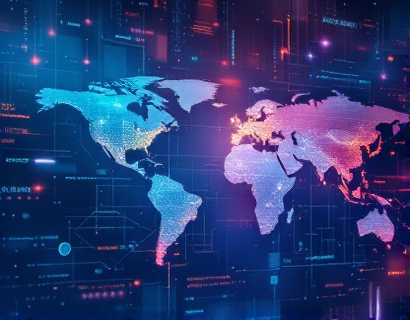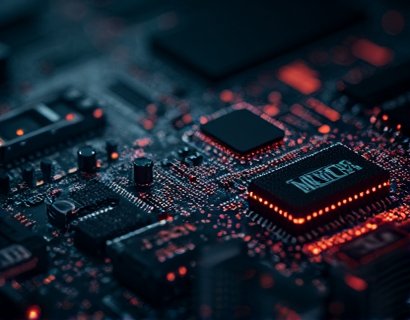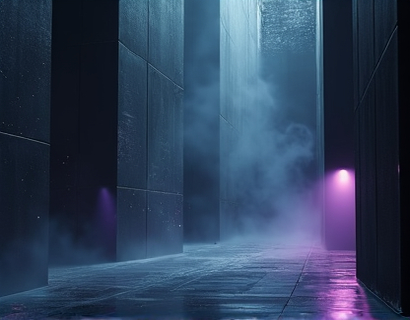Revolutionizing Memorial Creation: The Synergy of AI and Blockchain for Lasting Tributes
The concept of memorializing loved ones has evolved significantly with the advent of technology. Traditionally, memorials were physical structures or simple markers, but the digital age has opened new avenues for creating meaningful and personalized tributes. This article explores how the integration of Artificial Intelligence (AI) and Blockchain technology is transforming the way we create and preserve online memorials, offering a secure, personalized, and lasting legacy for the bereaved.
The Need for Innovative Memorial Solutions
The loss of a loved one is one of life's most profound experiences, leaving a void that cannot be easily filled. Bereaved families and individuals often seek ways to honor and remember their loved ones, turning to online memorials as a means of keeping their memories alive. However, traditional online memorial platforms often fall short in ensuring the security, personalization, and longevity of these tributes. This is where the combination of AI and Blockchain technology steps in, providing a robust solution to these challenges.
Understanding AI in Memorial Creation
Artificial Intelligence plays a pivotal role in crafting personalized memorials. AI algorithms can analyze vast amounts of data, including personal stories, photos, and videos, to create a comprehensive and nuanced tribute. This technology can identify patterns, emotions, and significant moments in a person's life, allowing for a more authentic and heartfelt memorial. For instance, AI can curate a timeline of the deceased's life, highlighting key achievements, milestones, and personal anecdotes, providing a narrative that resonates deeply with those who knew them.
Moreover, AI can assist in natural language processing to generate personalized messages, poems, or even letters from the deceased, based on their known writing style and preferences. This not only adds a personal touch but also helps in expressing sentiments that might be difficult for the bereaved to articulate. The use of AI in sentiment analysis can also help in managing and responding to condolences, ensuring that the memorial remains a supportive space for grief and remembrance.
Blockchain: Ensuring Security and Authenticity
Blockchain technology, known for its role in cryptocurrencies, offers a decentralized and immutable ledger that can revolutionize the way we handle digital assets and data. In the context of online memorials, Blockchain ensures that the memorials are secure, tamper-proof, and permanently stored. Each memorial can be represented as a unique digital asset on the Blockchain, with a cryptographic hash that verifies its authenticity and integrity.
The decentralized nature of Blockchain means that there is no single point of failure, reducing the risk of data loss or manipulation. This is particularly important for memorials, which are meant to be enduring and trustworthy. Additionally, Blockchain can facilitate the management of digital legacies, allowing the deceased to specify how their online presence, including social media accounts and digital assets, should be handled after their passing. This level of control and transparency provides peace of mind for both the deceased and their loved ones.
Combining AI and Blockchain for Enhanced Memorials
The true power of integrating AI and Blockchain in memorial creation lies in their synergistic capabilities. AI can handle the dynamic and creative aspects of memorial design, while Blockchain ensures the security and permanence of these tributes. Here’s how this combination works in practice:
- Personalized Content Generation: AI algorithms analyze the life of the deceased, generating a personalized narrative that includes photos, videos, and stories. This content is then securely stored on the Blockchain, ensuring it remains intact and accessible for future generations.
- Digital Asset Management: Blockchain can manage digital assets associated with the memorial, such as domain names, social media handles, and other online presences. Smart contracts can be programmed to automatically transfer these assets to designated beneficiaries upon the user's passing, ensuring a seamless transition.
- Grief Support and Community Engagement: AI can monitor and manage interactions on the memorial, providing support to the bereaved through personalized messages and resources. Blockchain can ensure that contributions to the memorial, such as condolences or donations, are recorded transparently and securely.
- Legacy Preservation: By combining AI and Blockchain, memorials can evolve over time, incorporating new content and updates while maintaining the integrity of the original tribute. This ensures that the memorial remains a living, breathing part of the deceased's legacy.
Benefits of AI and Blockchain in Memorial Creation
The integration of AI and Blockchain in memorial creation offers numerous benefits that traditional methods cannot match:
Security and Privacy
The immutable nature of Blockchain ensures that memorials are protected from unauthorized access and tampering. AI can further enhance security by implementing advanced encryption and access control mechanisms, ensuring that only authorized individuals can view or interact with the memorial.
Personalization and Authenticity
AI's ability to analyze and curate content ensures that each memorial is uniquely tailored to the deceased, reflecting their personality, interests, and life story. This level of personalization creates a more authentic and meaningful tribute, providing comfort and solace to those who visit the memorial.
Longevity and Accessibility
Blockchain's decentralized and permanent storage ensures that memorials are preserved for generations to come. Unlike traditional online platforms that may shut down or change over time, Blockchain-based memorials remain accessible, providing a lasting legacy for the bereaved.
Emotional Support and Community Building
AI-driven features can offer emotional support to the bereaved, providing resources and community connections. Blockchain can facilitate the creation of a supportive community around the memorial, where individuals can share memories, offer condolences, and find solace in shared grief.
Case Studies and Real-World Applications
Several platforms are already leveraging AI and Blockchain to create innovative memorial solutions. For example, a hypothetical platform could allow users to upload memories, photos, and videos, which are then processed by AI to create a dynamic and interactive memorial. This memorial would be stored on the Blockchain, ensuring its permanence and security. Users could also set up smart contracts to manage digital assets and specify how their online presence should be handled post-death.
Another application could involve a community-driven memorial where AI facilitates the curation of tributes from friends and family, while Blockchain ensures that all contributions are recorded and preserved. This collaborative approach not only honors the deceased but also provides a supportive environment for the bereaved.
Challenges and Considerations
While the combination of AI and Blockchain offers significant advantages, there are challenges and considerations to address:
Technical Complexity
Implementing AI and Blockchain requires technical expertise and resources. Ensuring that these technologies are user-friendly and accessible to a broad audience is crucial for widespread adoption.
Regulatory Compliance
Data privacy and regulatory compliance are critical, especially when dealing with sensitive information and digital legacies. Platforms must adhere to laws and regulations governing data protection and online memorials.
User Education
Educating users about the benefits and functionalities of AI and Blockchain in memorial creation is essential. Many may be unfamiliar with these technologies, and clear, accessible information can help in gaining trust and adoption.
Conclusion
The fusion of AI and Blockchain technology is poised to transform the way we create and preserve online memorials. By offering secure, personalized, and lasting tributes, these technologies provide a new dimension of remembrance and support for the bereaved. As these solutions continue to evolve, they have the potential to become an integral part of our digital legacy, ensuring that the memories of our loved ones endure for generations to come.










































